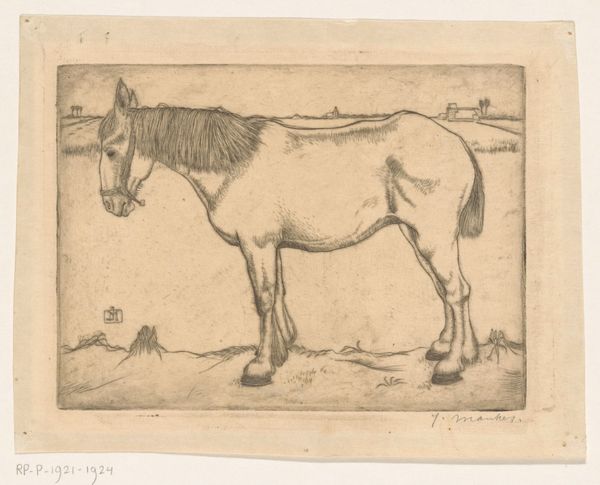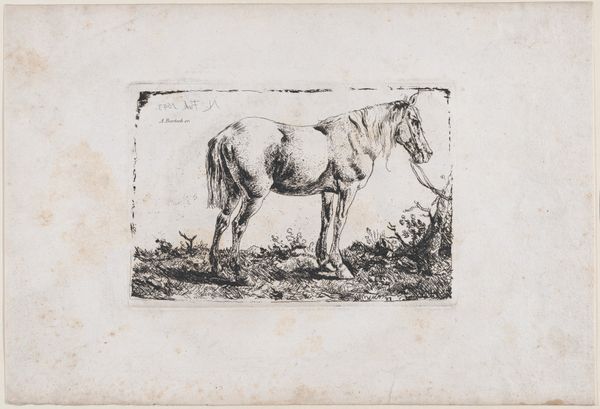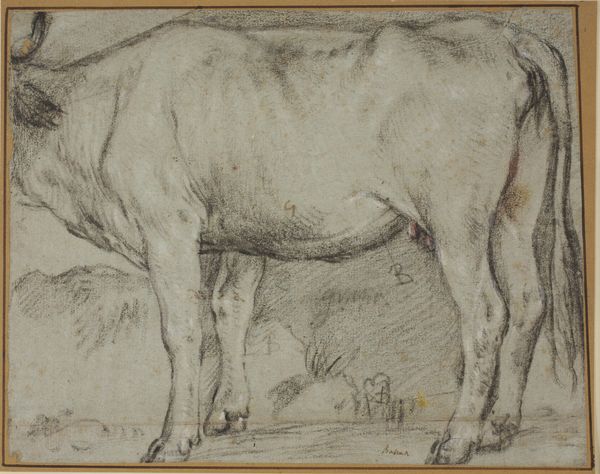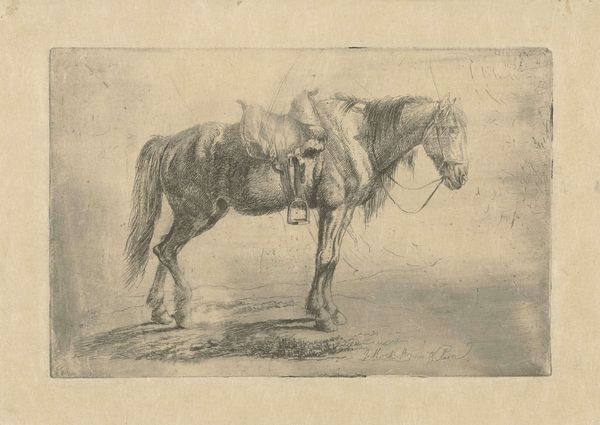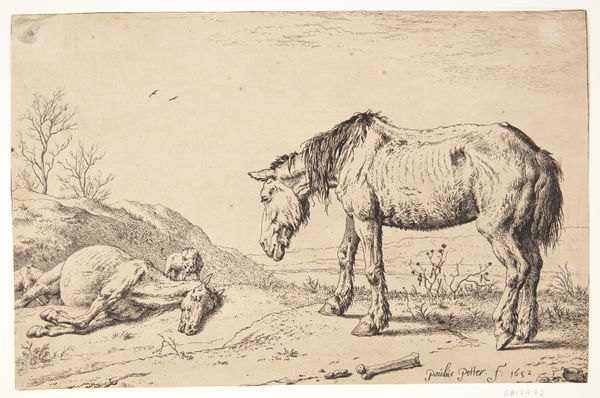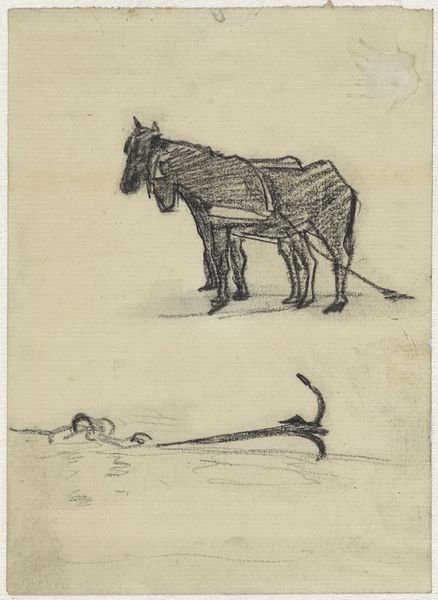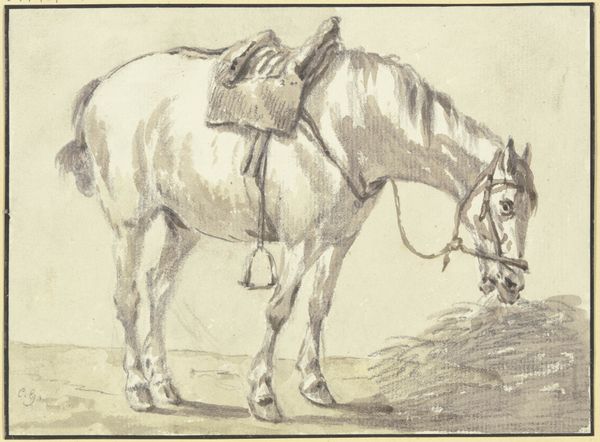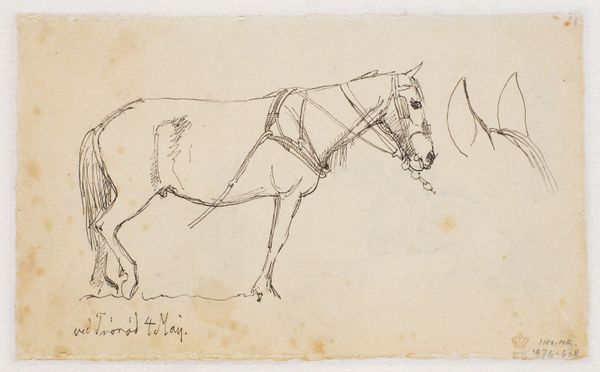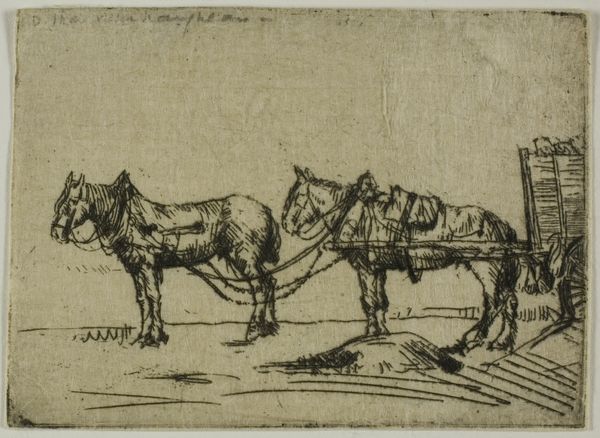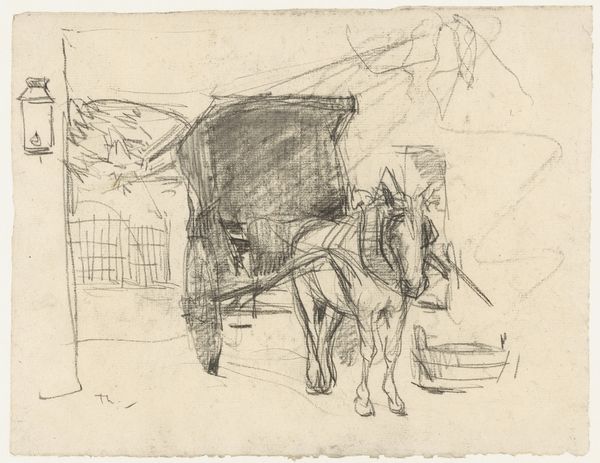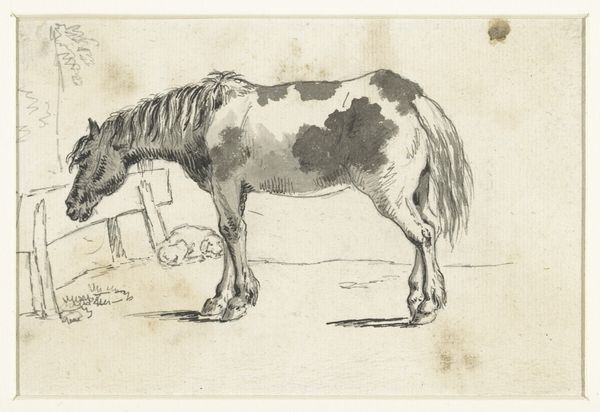
drawing, print, etching, paper
#
drawing
# print
#
etching
#
landscape
#
etching
#
figuration
#
paper
#
line
Dimensions: 122 × 109 mm (image/plate); 122 × 112 mm (primary support); 137 × 120 mm (secondary support)
Copyright: Public Domain
Editor: Today, we're looking at "Plate of Sketches" by Donald Shaw MacLaughlan, made in 1902. It’s an etching on paper. My first impression is one of fragmented observation, like a glimpse into the artist's notebook. What jumps out at you? Curator: Formally, observe how MacLaughlan uses line. Notice the density of hatching on the horse compared to the relative openness in the other sketches. The varied line weights delineate forms, create spatial depth, and also convey a certain dynamism within this static medium. How do you perceive the relationships between these different areas of the print? Editor: I see what you mean, the density gives the horse so much weight. I'm struck by how distinct they are, almost as if they don't belong on the same plane. It makes me wonder why MacLaughlan combined them this way. Curator: Precisely. Consider then how MacLaughlan employs a high contrast in texture and form; the detailed, almost burdened horse against the fleeting quality of the head or prone figure below. Note too the positioning. Is the head a study in repose or, perhaps, awaiting the horse's arrival? MacLaughlan asks the viewer to weave associations. What do you see? Editor: I initially saw the head as separate, but you’re right, its placement could imply a narrative. I find it interesting to observe the lines closely. Curator: Yes! The strategic arrangement of lines carries the image. Take note of the marks he leaves off entirely; open space to encourage interpretive work on our part. Editor: I hadn't thought about it that way, but now I see how much the empty space contributes. Thanks, I’ve learned so much. Curator: A rewarding experience; understanding art means looking beyond the depicted image itself and finding form.
Comments
No comments
Be the first to comment and join the conversation on the ultimate creative platform.

